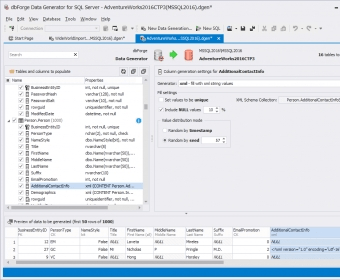

Decision making-wise, how much do your want your local sql/mysql client to influence/weigh in your architecture/technology decisions, though? This can be a slippery slope. Now that can be your application, if you only need others to. localdb is normally started by an application that its attached to, like the way it can be used with Visual Studio to provide a local version of a SQL Server database, thats easier to deploy than SQL Server Express. Another script in the project which creates the database scoped credential 'blobStorage' does succeed which this Data Source references. I have been running it at various companies (under AWS/RDS and AWS/Aurora) and have no reason to switch over to anything else. First, you need to make sure that the localdb instance is fired up. When I try to Publish to my local SQL instance, it stops with an exception at my EXTERNAL DATA SOURCE script which is a part of the project - it is to make available a blob storage account in Azure.
That said, could Azure MySQL ( ) be an option for you a this point? MySQL offers great performance. I have the below connection string in Web config and works fine in Visual Studio. You'd only be looking at MySQL Query Workbench, if you were running and connecting to a MySQL Database. Therefore, it certainly makes sense you stick with some of the official Microsoft Tooling to connect to it, query and administer it. So before connecting to the DB you need to run the command to get the connection string.Looking at your stack ( ), it seems you are using Azure SQL Databases. Please note, the connection string will be changing every time. You can execute command, modify records etc with SSMS. Click connect, you will be able to connect to LocalDB using SSMS. You need to copy the Instance Pipe name and paste it in SSMS Connect to server dialog, like this.Īlso you need to change the authentication mode to Windows. Syntax: - Drop the database 'DatabaseName' - Connect to the 'master' database to run this snippet USE master GO - Uncomment the ALTER DATABASE statement below to set the database to SINGLEUSER mode if the drop. Extend the industry-leading Microsoft SQL engine to edge devices for consistent performance and security across your entire data estate, from cloud to edge. Dropping a database from an instance of Azure Data Studio Server and it deletes the physical disk files used by the database.
#Azure data studio localdb series#
Once it is running, the command will display output like this. Azure SQL Edge, a robust Internet of Things (IoT) database for edge computing, combines capabilities such as data streaming and time series with built-in machine learning and graph features. Or you can run your ASP.NET Core application. Right click on the Connection > Databases node and.

You need to start the instance first, you can either do it with start commandline parameter with argument instance name. This is a rather very easy way to restore SQL Azure database locally using SQL Server Management Studio. If you notice the State is stopped and Instance Pipe name is empty. Provide server details and login details. Alternately from the Run dialog box, type SSMS.exe and then click OK. You might want to right-click the program and pin it to the Start Page.
#Azure data studio localdb windows#
& 'C:\Program Files\Microsoft SQL Server\130\Tools\Binn\SqlLocalDB.exe' info mssqllocaldb In Windows Start Page, type SQL Server Management Studio and the program will appear.

Connecting Localdb using Sql Server Management Studio


 0 kommentar(er)
0 kommentar(er)
